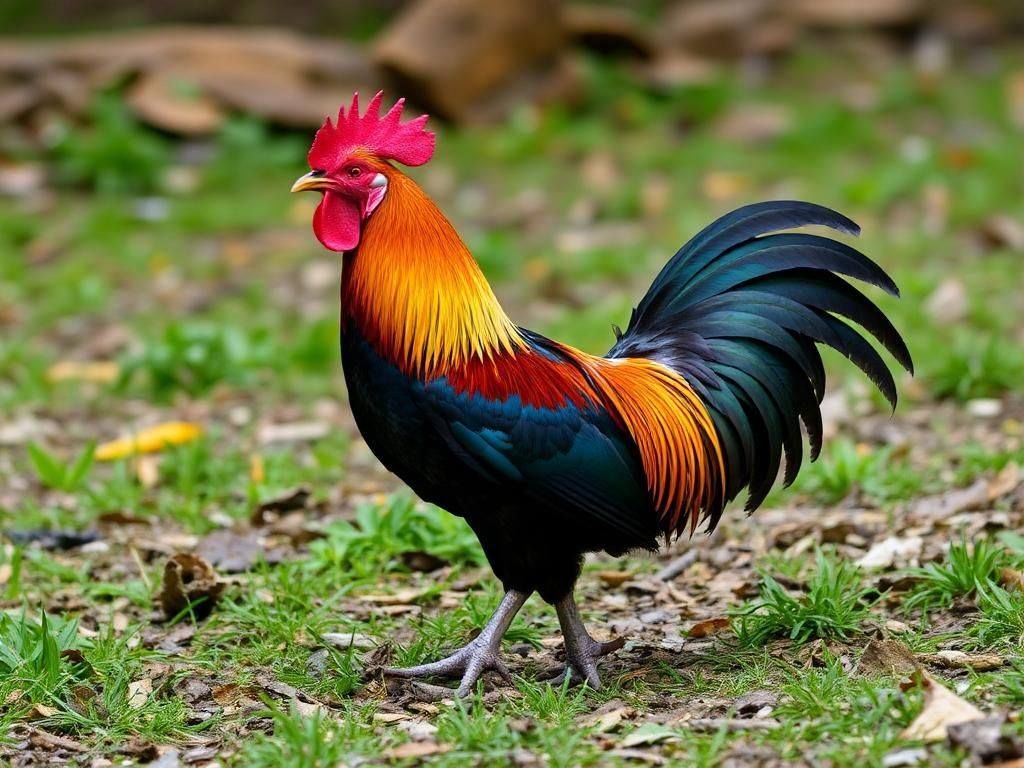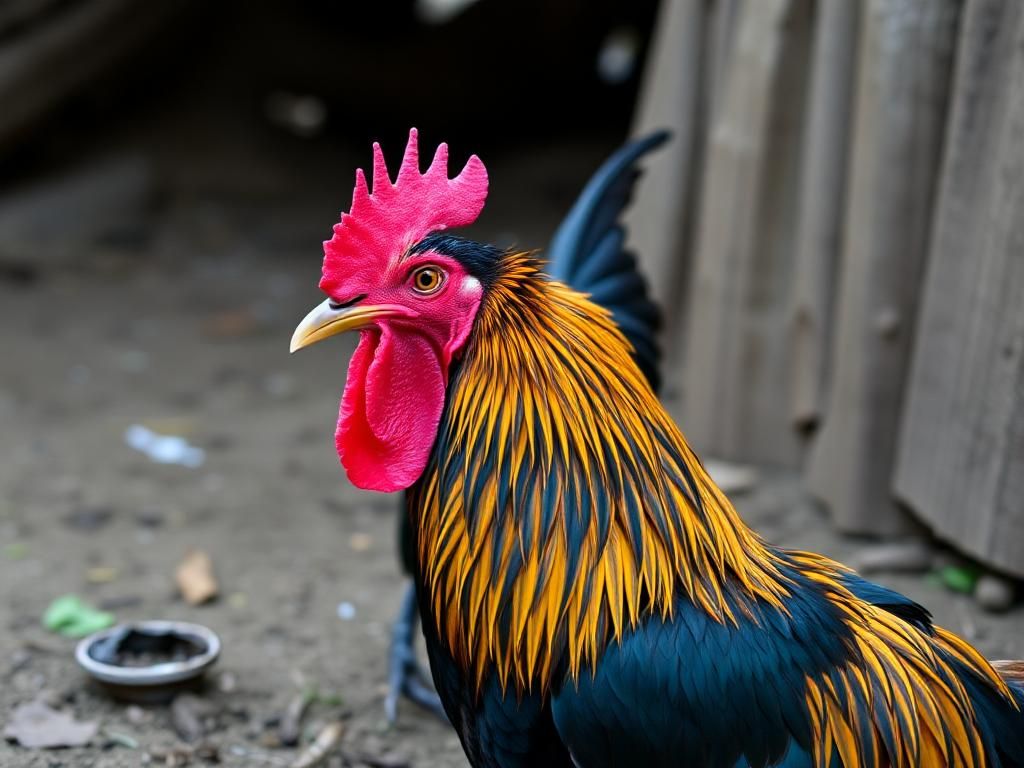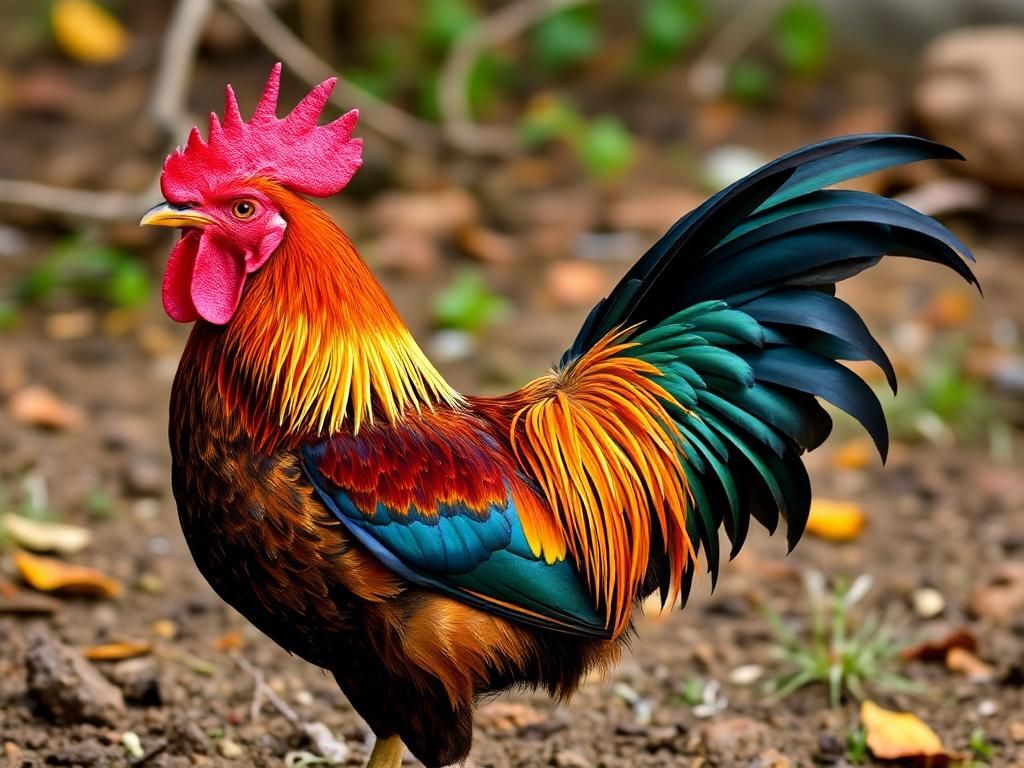Roosters have long been a symbol of rural life and agriculture. Their daybreak calls awaken the brave souls of the farm destined to rise with the sun. But why do roosters crow? Beyond common myths, their vocalizations carry significant biological, social, and cultural implications. In exploring why roosters crow, we discover not just their natural behavior but also their essential role in the agricultural ecosystem.
The Science Behind Rooster Crowing
Biological Mechanisms
Understanding why roosters crow begins with delving into their anatomy. A rooster’s vocal apparatus is equipped with a unique structure called the syrinx, located at the base of their trachea. This complex organ enables them to produce a wide range of sounds.
– **Syrinx Structure and Function**: The syrinx functions similarly to a human larynx but is capable of producing rich tones by changing its shape and tension. Using their syrinx, roosters can produce both loud crows and softer clucks.
– **Role of the Air Sacs in Sound Production**: Roosters possess air sacs that help amplify their vocalizations. The air passes through these sacs while the rooster calls, allowing for a powerful and resonant crow.
Hormonal influences also play a crucial role in crowing behavior.
– **Influence of Testosterone Levels**: Male roosters, particularly those with higher testosterone levels, tend to crow more frequently. This increased vocalization is often a display of dominance and fitness.
– **Circadian Rhythms Affecting Vocalization**: Crowing is also tied to a rooster’s internal clock. Circadian rhythms ensure that they are vocally active during certain times of the day, especially dusk and dawn.
Types of Crowing
Roosters are not just limited to crowing in the early morning hours. Their vocal patterns vary significantly throughout the day.
– **Morning Crowing**: Generally, roosters start crowing a few moments before dawn. This timing coincides with the first light of the day, as their bodies are naturally wired to respond to the changes in light.
– **Other Instances of Crowing Throughout the Day**:
– **Territorial Calls**: Crowing also serves as a robust territorial display, warning other roosters to stay clear of their domain.
– **Responses to Threats**: When sensing danger, roosters crow to alert hens and establish communication within the flock.
Rooster Crowing and Their Environment
Natural Triggers
Several environmental factors play a role in determining when and why roosters crow.
– **Dawn and Circadian Rhythms**: As diurnal creatures, roosters have a heightened response to dawn, chartering their behaviors with rising light.
– **Effects of Light and Darkness on Crowing Frequency**: The presence of light stimulates crowing, while extended darkness can decrease it. This connection is crucial for their survival and social structure.
– **Seasonal Variations in Crowing Behavior**: Seasonal changes can impact crowing patterns; for example, roosters may crow more frequently in spring due to heightened reproductive activities.
Social Interactions

Crowing is a vital means of communication among roosters and hens.
– **The Role of Crowing in Establishing Territory**: Roosters utilize crowing to assert their territory and compete with other males. The frequency and intensity of their crows may vary depending on their perceived threats.
– **Communication with Hens and Other Roosters**:
– **Dominance Displays**: Rooster crows not only signal territory but also function as a dominance display, establishing social hierarchies among males.
– **Flocking Behaviors**: Within a flock, roosters use crows to maintain cohesion and alert others to potential dangers, creating a complex communication network.
Cultural Significance of Rooster Crowing
Symbolism in Various Cultures
Roosters have been featured prominently in folklore and mythology across cultures.
– **Roosters in Folklore and Mythology**: Various cultures regard roosters as heralds of a new day and symbols of vigilance.
– **Significance in Different Cultures as a Timekeeper**: The crowing of a rooster is often associated with daybreak and waking from slumber, cementing its role as a timekeeper in both agricultural and residential settings.
Roosters in Modern Context
The significance of rooster crowing extends beyond agriculture.
– **Rooster Crowing in Agricultural Settings**: In farming practices, rooster crowing is often integrated into daily routines, providing a natural alarm clock for farmers and livestock.
– **The Use of Roosters in Art and Literature**: Roosters, particularly their crows, have inspired countless artworks, poems, and stories that emphasize their importance in culture and society.
Common Misconceptions about Rooster Crowing
Despite their familiar presence, many misconceptions exist regarding why roosters crow.
The Myth of Crowing at Dawn
Many people believe that roosters only crow at sunrise.
– **Clarifying the Belief That Roosters Only Crow at Sunrise**: In reality, roosters are known to crow at various times throughout the day, dispelling the myth that their vocalizations are limited to dawn.
– **Explanation of Varying Crowing Times**: Factors such as environmental stimuli, social hierarchies, and even noise pollution can influence when a rooster decides to vocalize.

Behavior of Different Breeds
Different breeds of roosters exhibit varied vocalization patterns.
– **Overview of Different Common Rooster Breeds**: Breeds such as Rhode Island Reds and Leghorns have uniquely different crowing behaviors. Some are more vocal than others, leading to diverse sounds in a typical farm setting.
– **Variance in Vocalization Patterns Among Breeds**: Some breeds might crow louder, while others produce softer sounds, showcasing the rich diversity inherent in rooster vocal behaviors.
Conclusion
Understanding why roosters crow unveils a complex and fascinating aspect of animal behavior. From their intricate biological mechanisms to the significance of social interactions and cultural relevance, roosters play a crucial role in rural and agricultural life. This knowledge not only enriches our appreciation of these creatures but also enhances practical implications for animal husbandry and the unique dynamics of rural living.
Additional Resources
For those interested in delving deeper into the fascinating world of poultry behavior, here are some valuable resources:
– **Suggested Readings on Poultry Behavior**: Books like *The Chicken Encyclopedia: An Illustrated Reference* can provide in-depth knowledge about chicken and rooster behavior.
– **References for Further Research**: Visit [The Poultry Site](https://thepoultrysite.com/) for comprehensive and guided insights into chicken breeding and behavior.
– **Websites and Organizations Focused on Poultry Care**: The American Poultry Association offers resources for poultry enthusiasts and professionals.
FAQs
1. Do all roosters crow at the same time?
No, while many roosters crow at dawn, they may also crow at various times throughout the day, depending on environmental and social factors.
2. How long do roosters crow?
Roosters can crow for several seconds to a minute, depending on their mood, the surroundings, and their social interactions.
3. Why do roosters crow at night?
Roosters may crow at night due to disturbances or to communicate with other members of their flock.
4. Are there quiet rooster breeds?
Yes, some breeds are known for being less vocal, such as the Silkie or Cochin, making them suitable for quieter environments.
5. Do hens respond to rooster crows?
Hens can respond to roosters’ crows, often following their lead or becoming aware of their presence when they vocalize.
6. How can I train my rooster to crow less?
Regular handling and creating a comfortable environment can help reduce excessive crowing in roosters.
7. What is the purpose of a rooster’s crow?
The primary purposes are territorial claims, mating calls, and alerting the flock to various threats or changes in the environment.
8. Can roosters crow if they are sick or stressed?
Sick or stressed roosters may crow less or inconsistently due to discomfort or changes in their health status.
9. Is crowing harmful to roosters?
No, crowing is a natural behavior and essential for communication among roosters and hens, unless it leads to excessive stress or injury.
10. What other sounds do roosters make?
In addition to crowing, roosters also produce clucks, crows, and even warning calls, which are crucial for communicating with their flock.
| Aspect | Description |
|---|---|
| Anatomy of Syrinx | Complex vocal organ enabling varied sounds |
| Crowing Triggers | Light, hormonal influence, territorial behavior |
| Cultural Symbolism | Timekeeping and heralding a new day |
| Common Breeds | Rhode Island Red, Leghorn with varying vocalization |
| Seasonal Variations | Frequency may change with seasonal light changes |
